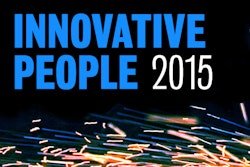
In 2008, Jay Weintraub created his first event based on a need he experienced in his own career. As an Internet advertising professional, he was frustrated that he could not find a conference that provided the thought leadership and education he was seeking.
So, without any prior planning experience, he quit his job to create LeadsCon. The first conference in Las Vegas attracted 600 people and grew each subsequent year, and in 2012 he sold the business to Access Intelligence. That experience nurtured his desire to identify other emerging professional communities that would find value in coming together to learn and network.
“It happens much more quickly now with technology. Either new job titles are created that didn’t exist before or there are new tactics companies have to master that they didn’t have to before,” Weintraub, 39, says. “It feels ripe for a company like us to identify areas where there’s very limited transparency and a lot of people are reinventing the wheel. Let’s see if we can aggregate information and help bring people together and create that efficiency.”
[PULLQUOTE]
In early 2014, Weintraub launched New York-based Grow.co, a company that conducts research and hosts events to address the marketing and customer acquisition challenges of online companies. His target audience is primarily comprised of millennials, a group that Weintraub says tends to feel very self-empowered and has not experienced the value of attending events. “A sizable piece of the target audience has not been exposed to a business event where there is content and networking,” he says. “They’ve been to happy hours, but they haven’t necessarily had first-hand experience of hearing someone talk and realizing that the answers can come from meeting people and not just from diligence and work. Spending time and having meetings is equally valuable. That’s what we want to expose them to because I’m so passionate about that.”
Grow.co started with three conferences in 2014, which each attracted about 250 attendees, and a series of smaller evening events for about 75 people each that offered a mix of content and networking. This year Weintraub and his team are tweaking their strategy based on what they learned from those events. “It is amazing if we look at our audience—just from October to January—and the number of people that have either switched jobs or just come into the space,” he says. “It’s about understanding the audience and trying to learn, do they want to get together? If we bring them together will they have a good time, will they find value, what should we be talking about?”
Back to the Most Innovative People in Events and Meetings list



















